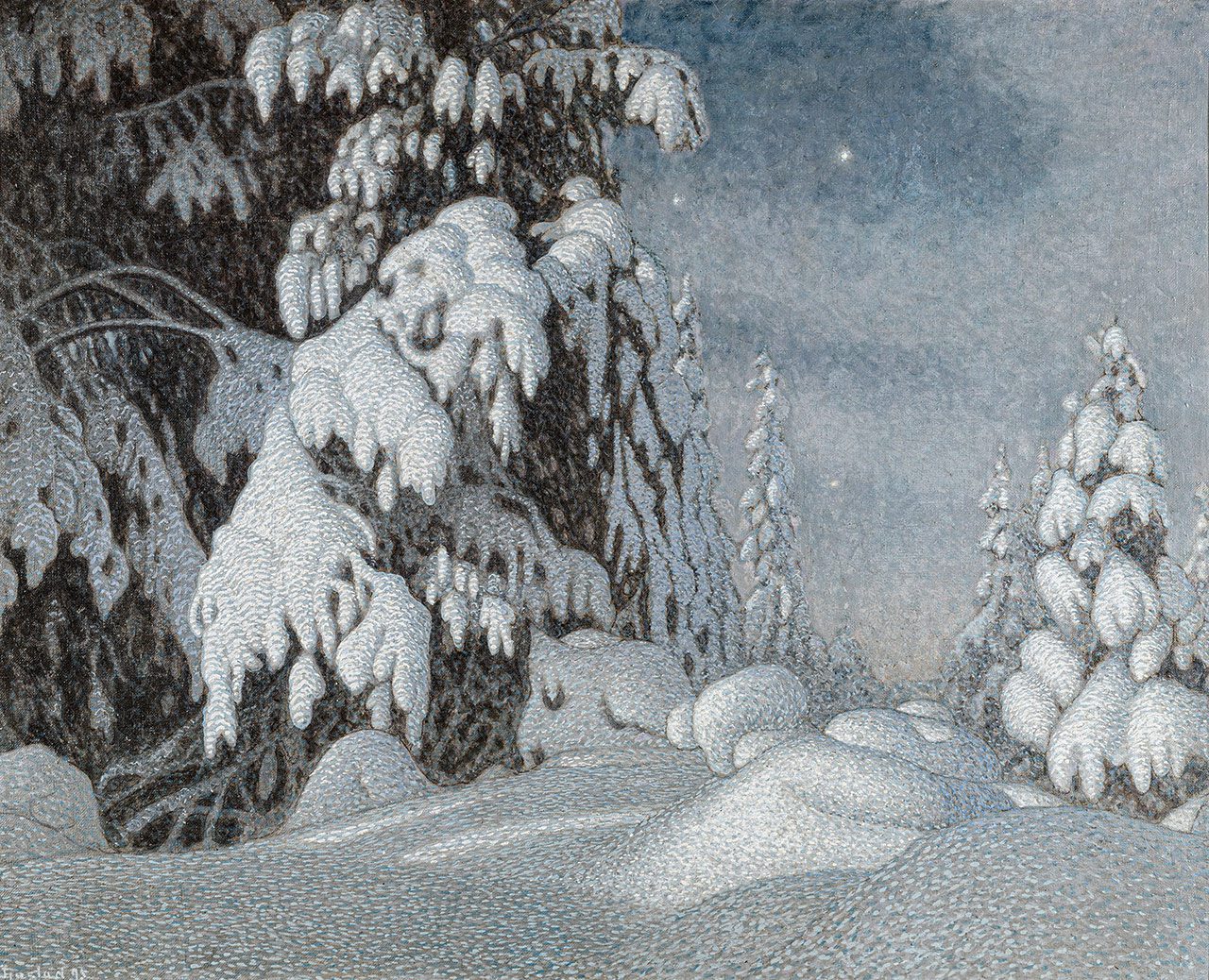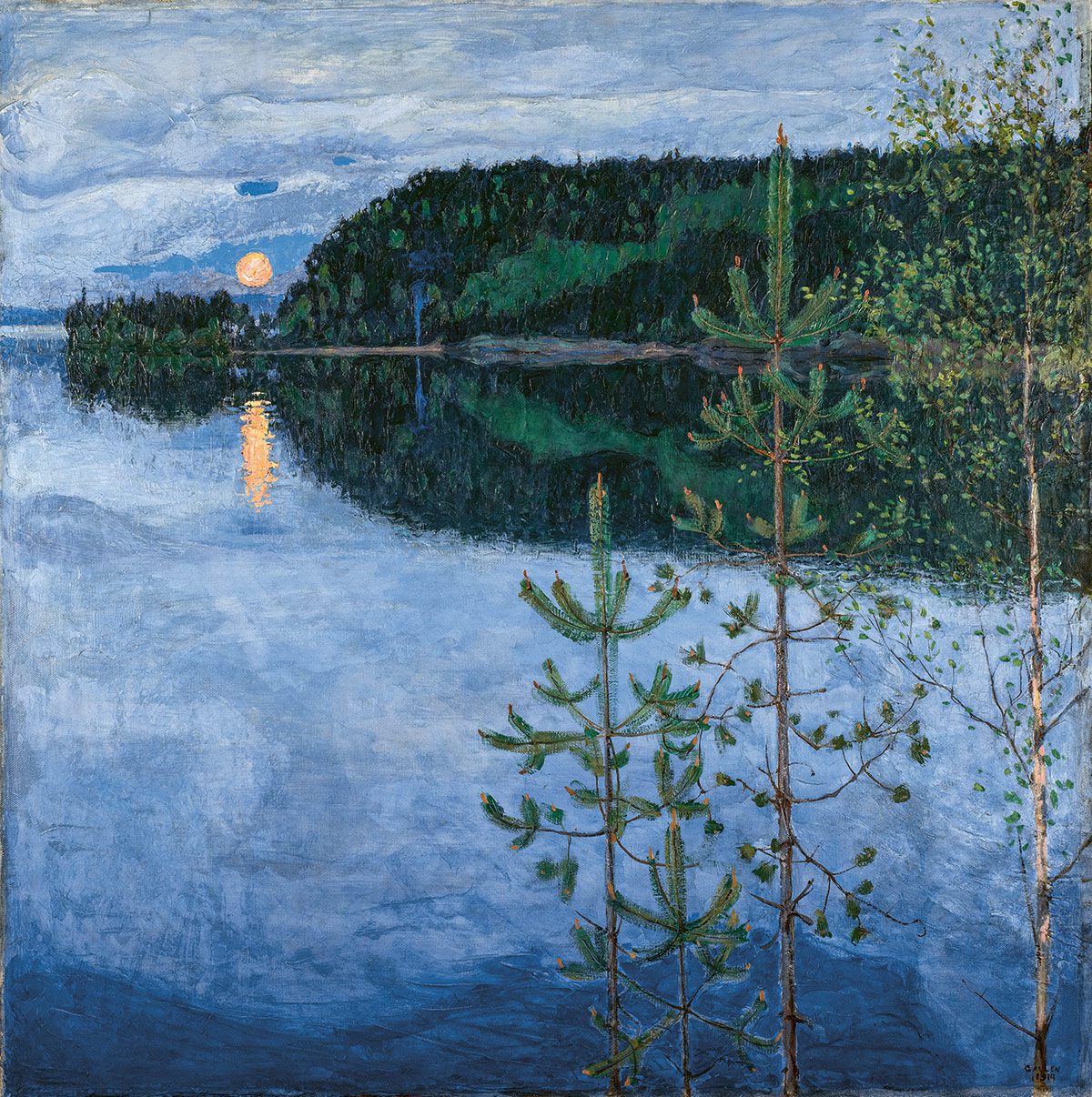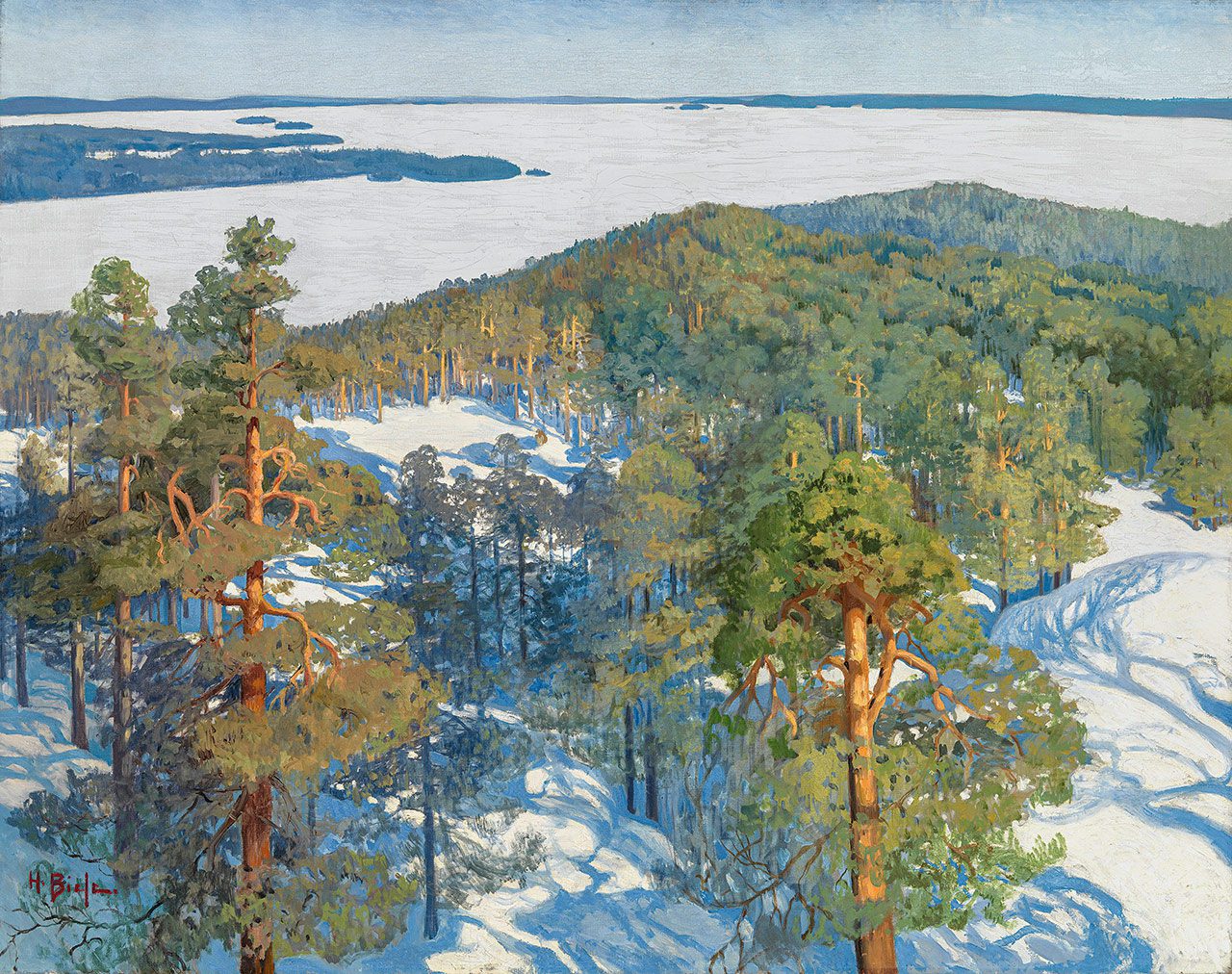ART CITIES: Basel-Over the Rainbow (Part I)
On the occasion of this year’s Eurovision Song Contest (ESC), hosted in Basel, the Fondation Beyeler presents “Over the Rainbow”, a special display of its collection. Taking its name from the legendary song in the celebrated musical film “The Wizard of Oz” (1939), the exhibition is conceived as a tribute to music and to the colourfulness and diversity that characterise the ESC.
By Dimitris Lempesis
Photo: Fondation Beyeler Archive
Ugo Rondinone’s rainbow light sculpture “we are poems” (2011) will be installed on the museum’s roof specially for the ESC. For all visitors travelling to the region during the ESC, the exhibition “Northern Lights” further provides a unique opportunity to immerse themselves in the fascinating world of Nordic landscapes. The Fondation Beyeler offers reduced admission from 9 through 18 May 2025. The rainbow, a fascinating natural phenomenon born of the encounter between sun and rain, provides the guiding theme of the exhibition “Over the Rainbow”, which circles the notions of light, water and the power of colors. As they enter the museum, visitors will be welcomed by Ugo Rondinone’s impressive rainbow light sculpture “we are poems” (2011), set up on the roof of the Fondation Beyeler. The rainbow sculptures are among the celebrated Swiss artist’s best-known works – he began producing them in the late 1990s, with the intention of working in public spaces with a symbol that is understood worldwide. The exhibition “Northern Lights”, is focusing on around 70 landscape paintings by artists from the Nordic Countries and Canada created between 1880 and 1930. These artists all share the nature of the North, in particular the boreal forest, as a common source of inspiration. The seemingly boundless expanses of the forest, the radiant light of endless summer days, the long winter nights, and natural phenomena such as the northern lights gave rise to a specifically Nordic form of modern painting that exerts enduring appeal and fascination. The boreal forest, also known as taiga or taiga forest, is the world’s largest primeval forest and plays a crucial role in the planet’s balance of the ecosystem. Its dense coniferous forests stretch south and north of the polar circle, covering large parts of Scandinavia, Finland, Russia and Canada. Its unfathomable uniformity and immense expanse make for an overwhelming experience. The boreal forest thus plays a dominant role in almost all the paintings in the exhibition. Only Anna Boberg and, in his later works, Lawren S. Harris painted landscapes north of the tree line, or even in the perpetual ice of the Arctic. Another element of these intense northern landscapes is water. In the paintings, the countless lakes and fjords often supply a horizontal contrast to the vertical trees of the forest and make the wind visible as it continually disturbs the water’s surface. The latter is particularly apparent in the works of Helmi Biese and Akseli Gallen-Kallela. Next to the snow, which defines the landscape’s appearance from late October into April, the light is another recurring motif: the mystical northern lights that illuminate the sky with vibrant colors, the bright summer days that never fully turn to dark, the summer solstice, and the darkness of endless winter nights. Artists perceived these natural phenomena not only as pictorial motifs but also as a vital force that significantly influenced their work. They thus not only captured what they saw, but also gave form to emotional experiences that transport the viewer into the vastness of the boreal forest and inspire reflection on the relationship between man and nature. The unique atmosphere of the North, with its extreme climatic conditions, has fascinated and inspired artists for centuries. In the North, a youthful generation of painters developed new strategies for depicting nature. The artists featured in this exhibition share an intensity in their manner of painting that seems to mirror the intensity of the natural environments they construed as landscapes. Through vibrant color, expressive brushwork, unconventional compositional and perspectival distortions, a psychological component, and at times the sheer size of their works, they aspired to visually capture the seasonal extremes of the natural light and the overwhelming vastness of the northern wilderness. The exhibition follows no particular chronology. Rather, individual rooms are devoted to the artists and their respective ways of approaching their natural surroundings and constructing them as a landscape, rendering a personal image of nature. The painters of the North absorbed impulses from the conventions of different pictorial traditions as well as from the avant-garde trends emerging in continental Europe. Influential modern artists such as Vincent van Gogh, Claude Monet, Paul Cézanne and Henri Matisse helped shape modern landscape painting in the North, opening new perspectives in terms of color, light and form. While Nordic painters embraced these ideas, they interpreted them in their own, distinctive way, developing a unique form of Northern modernism. More than a style, it embodies an ethos that celebrates inhospitable nature, along with its grandeur and its nuances. From 1870 to 1920, Nordic painting experienced a golden age, in which a breathtaking variety of images was created. The advent of modernity was defined by a thirst for freedom, self-determination and independence, leading artists to forge new paths. A key element found especially in and Scandinavian and Finnish painting appears to be the view from above. These panoramic landscapes give the impression of having been painted with the aid of images captured by a drone. Helmi Biese, as well as Akseli Gallen- Kallela, Anna Boberg or Prince Eugen adopted this perspective, as though not only painting the landscape but actively creating it, as godlike originators of nature, instead of merely imitating it through art. It is noticeable that the landscapes on display often depict views of nature in which humankind is only marginally present. Yet, indirectly, humans are present: for example in Edvard Munch’s landscapes of the soul, in his painted shadows or in a train’s fleeting smoke. In Gustaf Fjæstad’s panorama-like detailed view, footprints in the snow attest to the transience of human life as set against the scale of eternal nature. The absence of human presence may also be linked to northern painters’ guiding notion of having their work conjure an idealising cliché of utopian yearning for unspoilt nature. The Fondation Beyeler has commissioned contemporary Danish artist Jakob Kudsk Steensen (*1 to create a new digital installation, which will premiere alongside the exhibition. In Boreal Dreams, the artist explores the effects of the climate crisis on the ecosystem of the boreal zone by conceiving virtual landscapes based on scientific data collected through fieldwork and on gaming technology.
Works by: Helmi Biese, Anna Boberg, Emily Carr, Prince Eugen, Gustaf Fjæstad, Akseli Gallen-Kallela, Lawren S. Harris, Hilma af Klint, J. E. H. MacDonald, Edvard Munch, Ivan Shishkin, Harald Sohlberg and Tom Thomson.
Photo: Helmi Biese, View from Pyynikki Ridge, 1900, Oil on canvas, 91 x 115 cm, Finnish National Gallery, Ateneum Art Museum, Hoving Collection, Photo: Finnish National Gallery / Aleks Talve
Info: Curators : Ulf Küster and Helga Christoffersen, Fondation Beyeler, Baselstrasse 101, Riehen/Basel, Switzerland, Duration: 26/1-5/5/2025, Days & Hours: Mon-Tue & Thu-Sun 10:00-18:00, Wed 10:00-20:00, www.fondationbeyeler.ch/
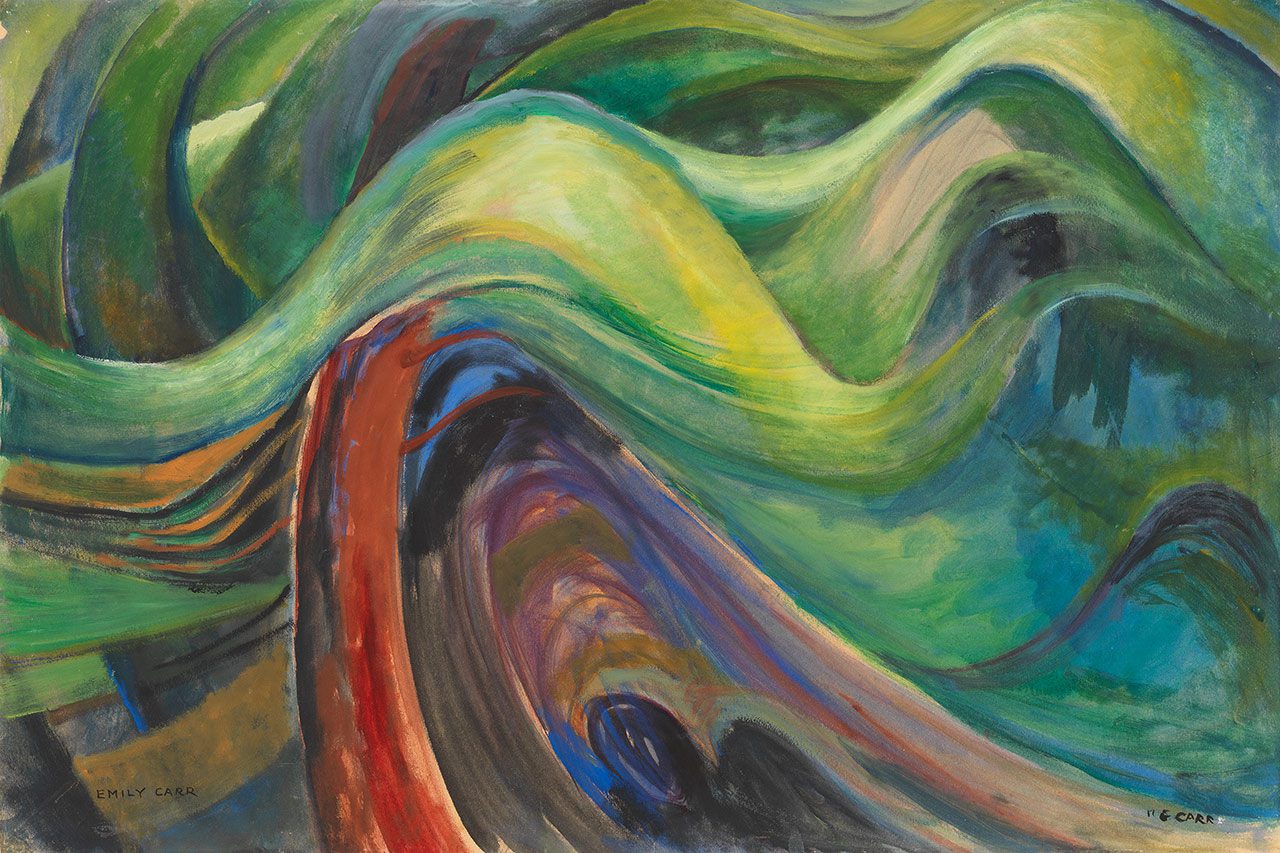
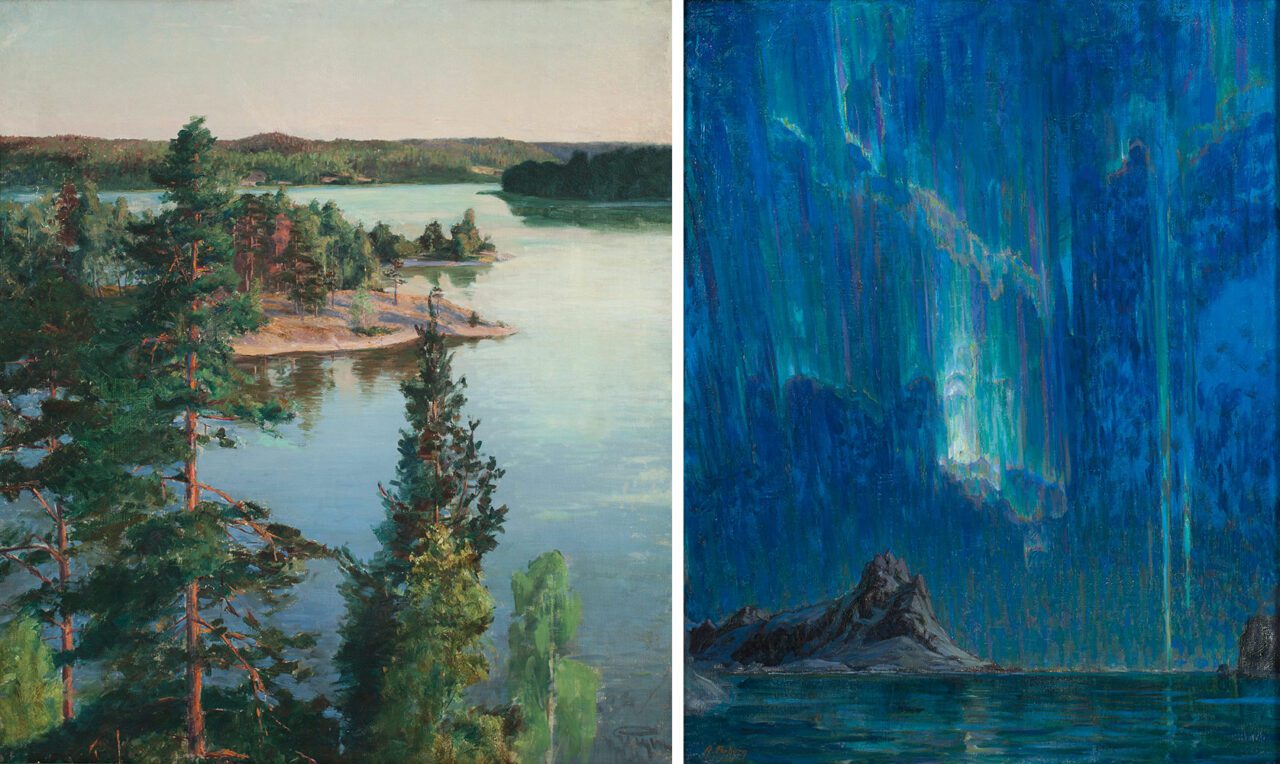
Right: Anna Boberg, Northern Lights. Study from North Norway, n.d., Oil on canvas, 97 x 75 cm, Nationalmuseum, Stockholm, bequest 1946, Ferdinand and Anna Boberg, Photo: Anna Danielsson/Nationalmuseum
